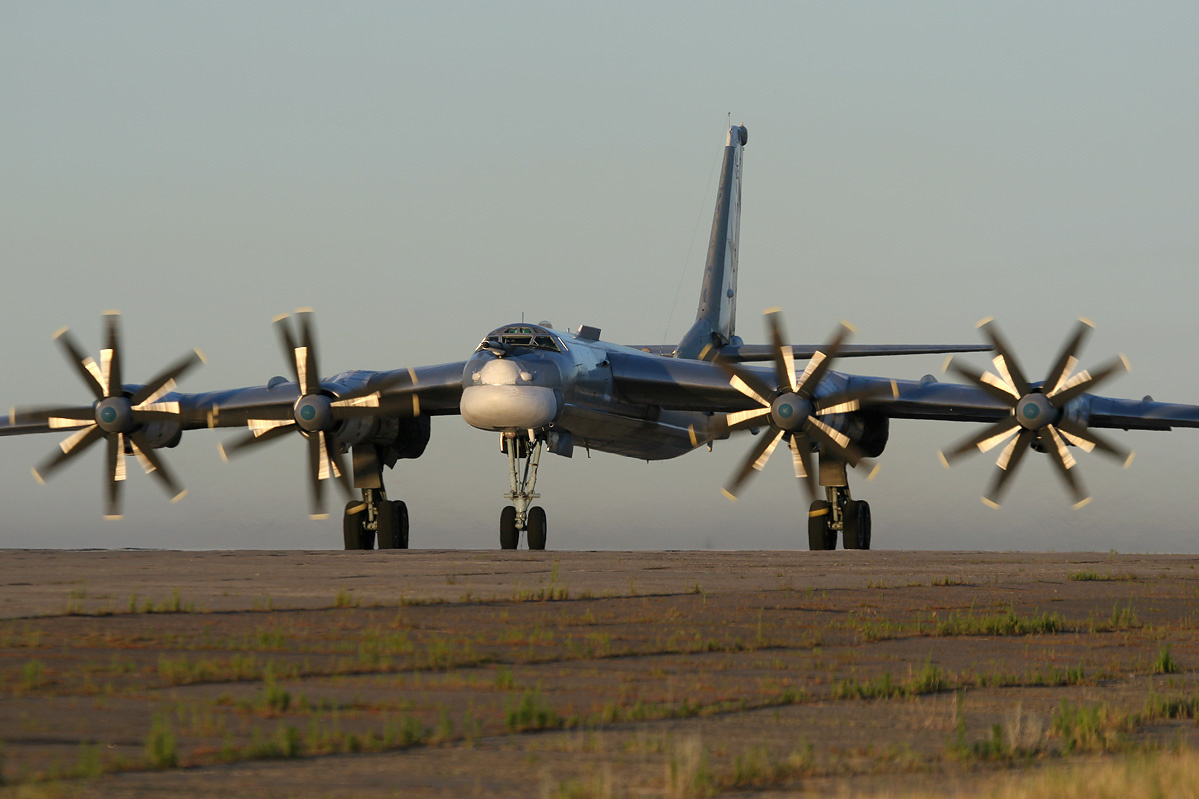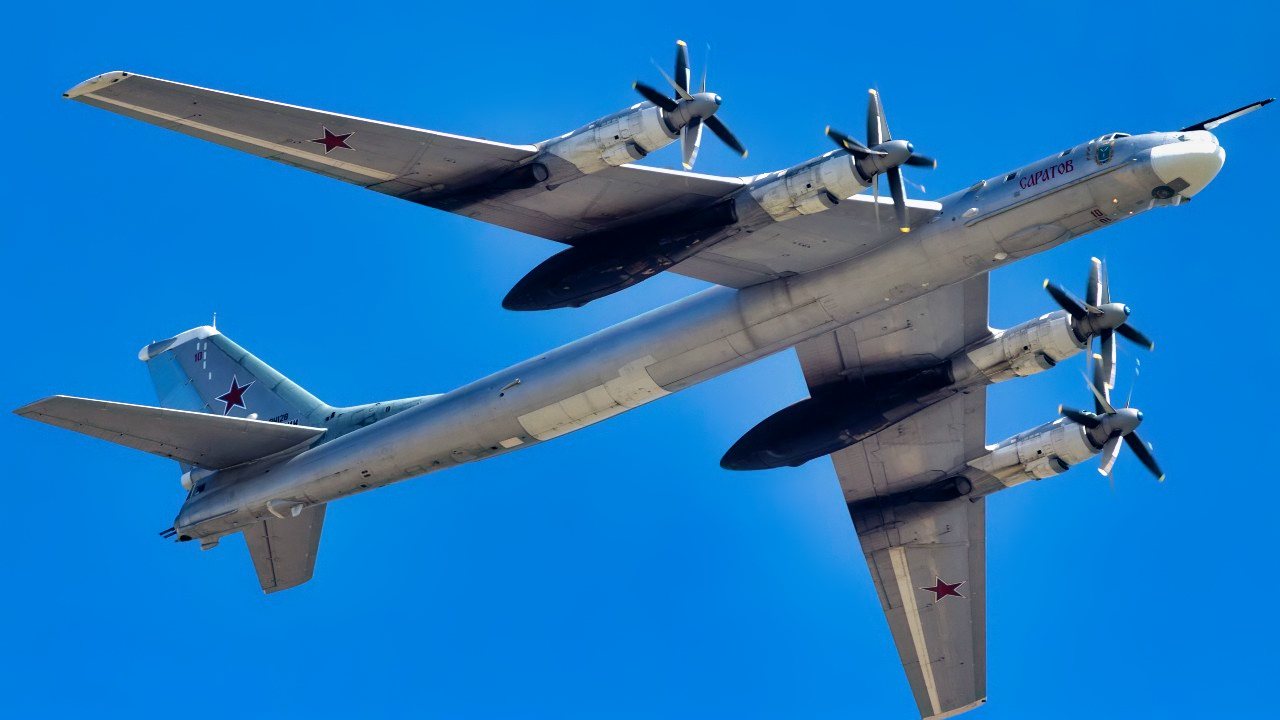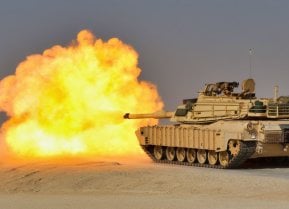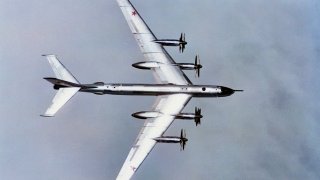Tu-95: Russia’s 'Bear' Bomber Is A Flying History Museum
The Tupolev Tu-95 “Bear” made its maiden flight on Nov. 12, 1952, and it entered into operational service with the Long-Range Aviation of the Soviet Air Forces in 1956.
Russia's Tu-95 Bear Bomber is Ancient - But Still Flying: The bear has long been considered the animalistic symbol for Russia, in the same vein that the bald eagle has represented the United States of America. Appropriate, since Russia indeed has the most bears of any country in the world.
It is not surprising, then, that when the NATO personnel in charge of coming up with official reporting names for Soviet aircraft had to pick a moniker for the Tupolev Tu-95 heavy bomber, they went with “Bear.”
For the benefit of readers relatively unfamiliar with Russian-Soviet military aircraft, it is NATO standard operating procedure to designate the bombers with B words, fighters with F words, helicopters with H words, and so forth.
Tu-95: Birth of the Bear Bomber
The Tupolev Tu-95 “Bear” made its maiden flight on Nov. 12, 1952, and it entered into operational service with the Long-Range Aviation of the Soviet Air Forces in 1956.
Yet it did not see combat for the first time until 2015, when Bears launched cruise missiles against ISIS ground targets in Syria. Somewhat akin to America’s B-52 Stratofortress, the Tu-95 remains in service to this very day. Indeed, it is expected to remain in service with the Russian Aerospace Forces until at least 2040. Indeed, the Bear the only propeller-powered strategic bomber still in operational use.
The Federation of American Scientists info page states that, “The Tu-95 BEAR was perhaps the most successful bomber produced by the Soviet aviation, enjoying long service in a variety of roles and configurations. It was the only bomber deployed by any country to use turbo-prop engines, which provided extraordinarily long endurance at speeds only slightly less than comparable turbojet-powered heavy bombers.”
On the subject of speed, the FAS lists the basic bomber variant of the Russian plane, the Tu-95M AKA “Bear A,” as having a maximum airspeed of 925 km per hour, while the battle-tested cruise missile-bearing Tu-95MS “Bear H” maxes out at 830 kph. Meanwhile, the jet-powered B-52 “BUFF” clocks in at a maximum airspeed of 1,046 kph.
As implied by a nickname like Bear, this is a large plane. Its maximum takeoff weight is 190 metric tons. It has a fuselage length of 49.1 meters and a wingspan of 50.1 meters. Height at the tail is 13.4 meters. The Bear A can carry a maximum bomb load of 12,000 kilos. The plane has a range of 13,200 km, and it is powered by four Kuznetsov NK-12MV turboprops. Depending on the specific mission, the plane carries a crew of either 6 or 7.
Tu-95: This Bear Does Many Circus Tricks
Continuing with the B-52 comparisons, one reason why both warbirds have remained in service for so long is that they are both such versatile platforms. In the case of the Bear, nine different variants have been built, and though it no longer performs the nuclear-strike-mission role, some of its continuing roles have included electronic intelligence, recce (TU-95RTs/Bear D); photo recce (Tu-95U/Bear E); anti-submarine warfare (Tu-142/Bear F); submarine comms relay (Tu-142MR/Bear J); and even a passenger airline variant, dubbed the Tu-114.

The BUFF may carry a bigger bomb load than the Bear, but one area where the Russian bomber has its American counterpart beat is a tail “stinger” – in other words, it has tail guns for self-defense against enemy interceptors. By the time I enlisted in the U.S. Air Force in 1999, the USAF had eliminated the tail gun position. Indeed, the last American airman to ever serve as an aerial defense gunner on the B-52, Rob Wellbaum, retired on May 12, 2017, at the rank of Chief Master Sergeant (the highest enlisted rank in the USAF).

By contrast, the Bear still retains its two 23mm Gryazev-Shipunov GSh-23 autocannons. In fact, in July 2021, the Russian Defense Ministry released a demo video that included a show of force with the cannons.
Don’t Poke the Bear!
Bear-baiting may have been considered a socially acceptable and popular practice back in Shakespearean England. But the Tu-95 is one mechanical bear you don’t want to poke.
About the Author
Christian D. Orr is a former Air Force Security Forces officer, Federal law enforcement officer, and private military contractor (with assignments worked in Iraq, the United Arab Emirates, Kosovo, Japan, Germany, and the Pentagon). Chris holds a B.A. in International Relations from the University of Southern California (USC) and an M.A. in Intelligence Studies (concentration in Terrorism Studies) from American Military University (AMU). He has also been published in The Daily Torch and The Journal of Intelligence and Cyber Security. Last but not least, he is a Companion of the Order of the Naval Order of the United States (NOUS). In his spare time, he enjoys shooting, dining out, cigars, Irish and British pubs, travel, USC Trojans college football, and Washington DC professional sports.
All images are Creative Commons.


